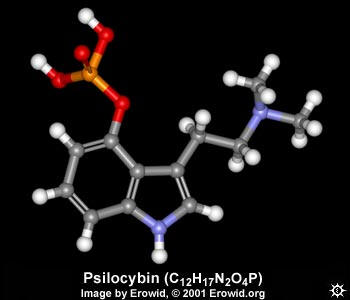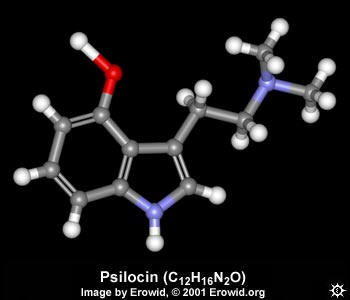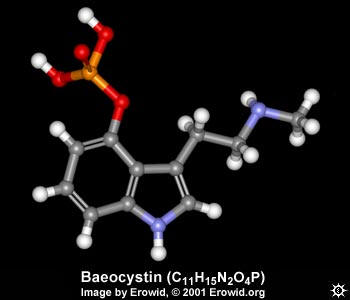Psilocybe cubensis
Psilocybin Effect
P. cubensis is known for it's psychoactive effects on humans. Psilocybe cubensis contains three different hallucinogenic compounds: Psilocin (4-hydroxy-N,N-dimethyltryptamine), Psilocybin (4-Phosphoryloxy-N,N-dimethyltryptamine), Baeocystin (4-Phosphoryloxy-N-methyltryptamine). Dried mushrooms from this fungus contain .2 to .4 percent psilocybin (Schultes & Hofmann, 1980).
Doses of this psychedelic mushroom range from .25 to 10 grams. Depending on the potency and the one doing the drug determines the amount of mushroom eaten. When the mushroom is eaten, the psychoactive effects last from four to seven hours. Any dose from .25 to .75 grams is considered a light dose, from .75 to 2.5 grams is considered a moderate dose, and anything from 2.5 to 10 grams is considered to be a high dose.
The on-set, coming up, plateau, and coming down are the four different stages of a 'trip.' The on-set is the beginning when people feel effects such as cold feeling and nausea. When someone is coming up they are experiencing some feeling of nervousness and their pupils begin to dilate. The obvious stage plateau makes the person feel many different feelings such as wonder, sad, mad, happy, giddy, or despair. Also, they have open-eye visualizations with either an increase/decrease ability to focus on certain things. The final stage of the 'trip' is the coming down and in this stage the person starts to come back to reality gains control of their focus and feelings.
Although these descriptions are provided for each stage they can vary along with the strength of the trip when taking certain dosages. Factors such as age, gender, body chemistry, and physical health can all affect the severity of a trip.
I do not advise anyone to try magic mushrooms. The sole purpose of this site is to inform the public about hallucinogenic mushrooms. Below are the molecular structures of the psychoactive compounds.


